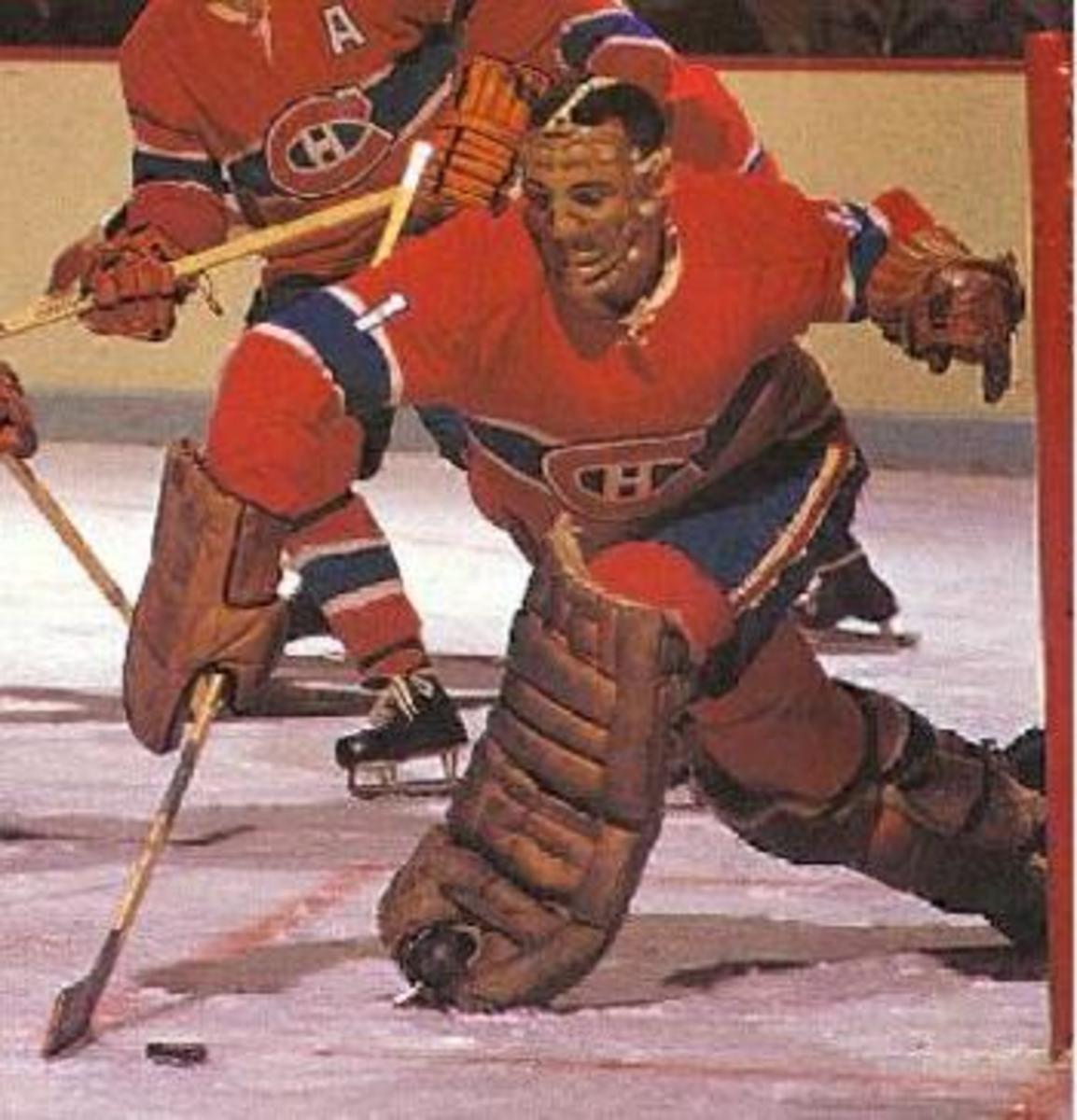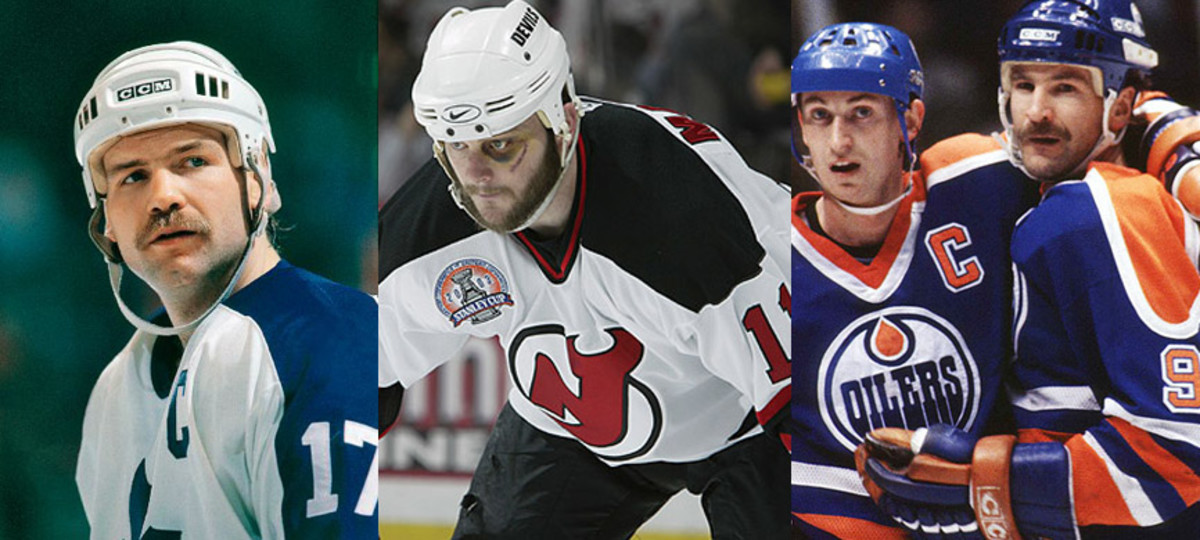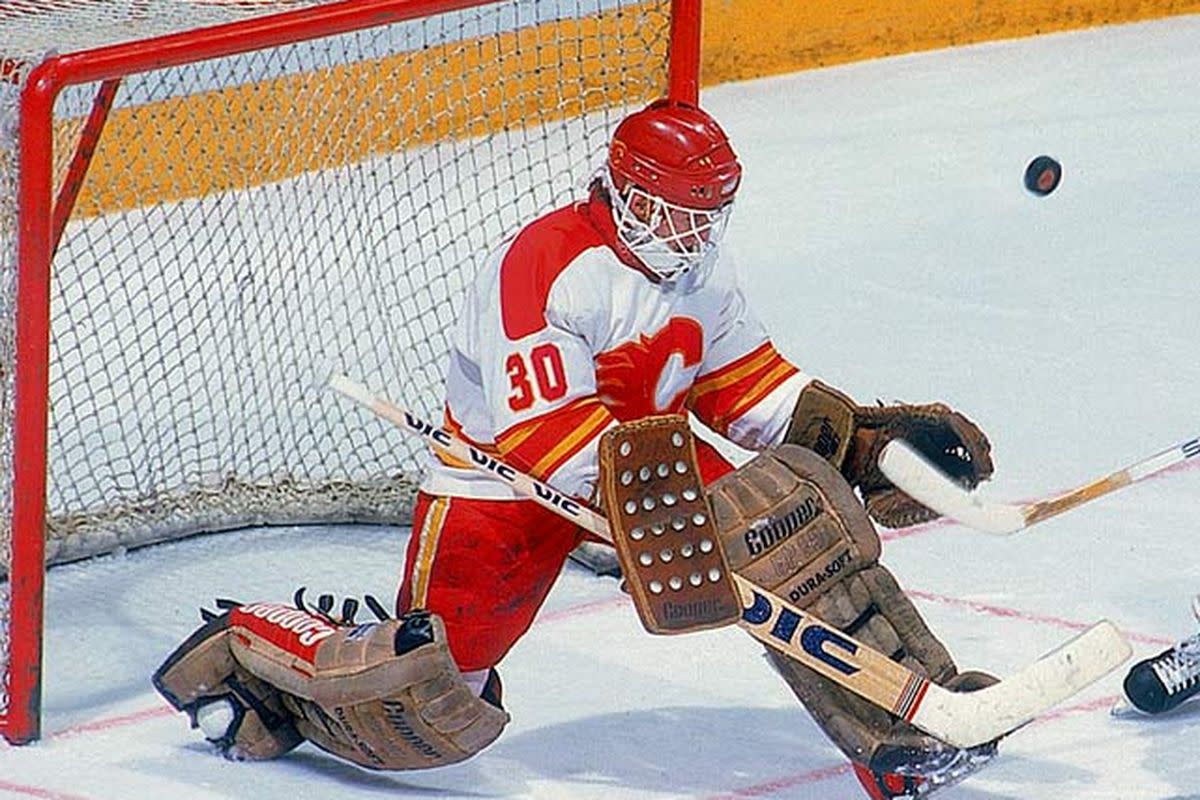How to Watch Hockey Like a Pro : Part 1
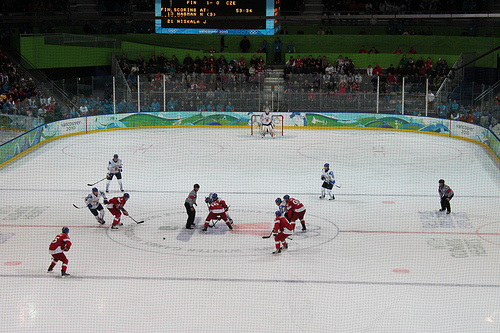
Ice hockey is an incredibly fast and fascinating sport. It's exhilerating, and it doesn't take much knowledge to enjoy it. However, if you watch long enough, certain things may begin to stand out to you--things that may even bother you, or maybe you'll shout your concerns to the players from your seat in the stands.
This is a common sentiment, but the fact is, many things appear differently from the stands than they do on the ice. This articles covers a number of aspects of the game of ice hockey that may seem simple to fans, but for players there are a few other variables. Hopefully, this will help some people learn about ice hockey.
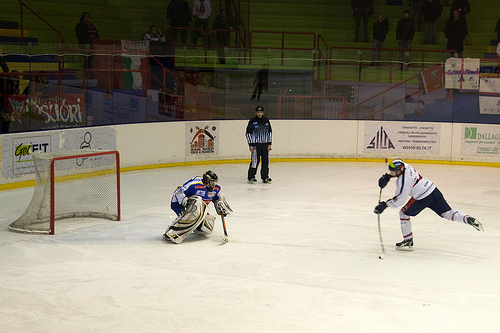
Why Do Goalies Always Drop Into the Butterfly?
Why does the goaltender go down into the butterfly so often? He's leaving the entire top part of the net open.
This statement has been made over and over again at so many hockey games, it should be immortalized on a plack. As recent as the seventies and the early eighties, goaltenders stood in their crease and amazed fans with brilliant kick saves that made them look like super-human spider like beings. At that time, the goalies also wore heavy leather pads that were stuffed with material for more padding. These pads would collect moisture, and were incredibly heavy by today's standards. In the time of Bernie Parent and Tony Esposito, both star goaltenders in their day, if a goalie went down, he wasn't likely to get back up very quickly, which was a huge deterrent for the butterfly style.
In the nineties, a new style of pad was introduced with lighter synthetic leather, and high-density foam that offered padding that didn't collect water, and made life a whole lot easier for goaltenders who wanted to move around. From this point on, goaltenders found themselves going down more frequently.
However, pad design wasn't the only reason for the advent of the butterfly style. Ice hockey is different than most sports, like football, baseball, and lacrosse, because those sports are played at eye level. Hockey, on the other hand, is played at ice level. When coaches begin teaching shooting to players, at any age range, they use the phrase, "The puck has eyes." This means, when shooting, it doesn't matter what areas of the net you can see from your eyes, it only matters what the puck can see, from ice level.
If you want a demonstration of this, find a goaltender who'll take a normal stance in front of a net. Now, stand about twenty feet from the net, and take a look at where the net is visible. You'll likely see some over the shoulder, maybe under the arms, and nothing but a sliver of a five-hole.
Now, lay flat on the ice, where the puck would be for a shot. What do you see? From the ice up about 12-inches on both sides of the pads is all available. And the five-hole, that was a sliver, is now a huge gaping hole. Do you see anything above the goalies shoulders? No, in fact, depending upon the goalies height, you might see his shoulders above the cross-bar.
But wait, there's more. Remain on the ice, and ask your goalie friend to drop into the butterfly. Now what do you see? Uh-huh! Not much at all.
This is why so many goalies drop into the butterfly. There aren't too many players who can arc a shot over out-stretched pads from in close.
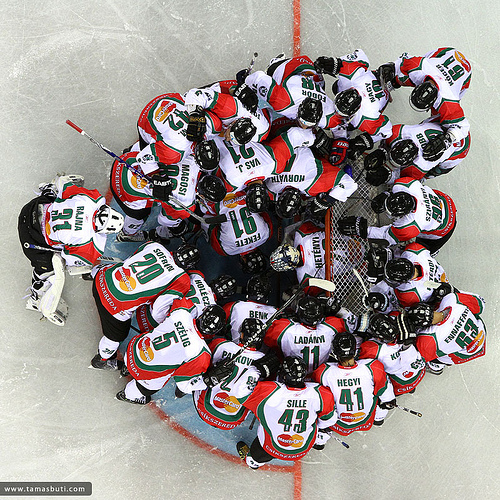
Why, On the Power Play, Doesn't the Team Shoot More?
I love power plays, but why doesn't my team shoot more? I always see an open man.
There's always that guy, probably sitting right behind you, screaming, "Shoot the puck!" but the team never seems to listen. He of course knows he's right, and if he coached the team they'd have already won a Stanley Cup by now.
The reason teams don't shoot more on the power play has to do with the refinement of penalty kill strategies. Because of better strategy, in some ways, teams on the penalty kill have an advantage. While killing off penalties, teams don't have to worry about the offensive aspects of the game. They just have to defend their zone. And as an added bonus, they don't have to worry about icing calls, so they can just get possession of the puck, and fire it the length of the ice.
While on the power play, teams do have to worry about offense and defense. Penalty killing teams use a strategy called the "box". They set up into a box, cut off passing lanes, and try to block shots. And if they get an opportunity to take control of the puck, they'll grab it and fire it the length of the ice. Or, in some rare cases, when the power play team makes a mistake, they'll carry the puck up the ice, and try for a scoring chance.
When on the power play, teams are trying to keep the puck moving. They want to maneuver the puck around the box, trying to pull it out of shape, so they can set up a shooting lane. Otherwise, they'll likely try to force a play that isn't there, and possibly set up a scoring chance for the other team.
One of the most important pieces of equipment for penalty killers is their shin pads. Imagine, on a power play, the attacking defenseman winds up for a slapshot only to fire the puck directly into the shin pads of a penalty killer. This will cause the puck to bounce out of the zone. At best, the power play team will have to regroup, and try to enter the zone and set up again. At worst, the blocked shot will become a breakout chance for the penalty killers. This is especially problematic, because the defensemen on the power play are facing the wrong way, and the penalty killers will likely get a short-handed breakaway. This can be extremely deflating for a power play.
Why Do Defenseman Stand Idly Behind the Net Handling the Puck?
Why is he just standing there? Skate!
Hockey is a fast-paced and exciting sport, and any lull in the action will bring about frustrated screams from fans. At least a dozen times per game, the team will slow down, while a defenseman carries the puck behind the net, and just stands there moving it back-and-forth. This situation, is one in particular that is similar to the sport of football. In fact, the defenseman behind the net, is commonly called the quarterback defenseman.
One of the most important aspects of any competitive hockey is something called a breakout. This is when a team regains control of the puck in their own zone, and begins the journey out of their own zone, through the neutral zone, and attempts to hit the offensive zone with momentum. The way they accomplish this is to take a few moments to set things up, much like a play in football. The quarterback defenseman remains behind the net, for a barrier between the puck and possible attackers, meanwhile the other players on the ice are getting into position for the breakout. The quarterback defenseman will survey the ice, and try to make the best judgement on how to proceed.
The breakout is a set play that every team practices. There are at least 200 variations of the play, and, although there are things that are common for all, no team does it quite the same way. This gives the breakout team a slight advantage.
Another thing fans tend to scream about, is why doesn't an attacking player go behind the net to try and steal the puck. The truth is, some teams will do just that. However, the quarterback defenseman has two outlets while behind the net. If an attacking player chases the quarterback defenseman behind the net, the quarterback can escape out the other side, and now the attacking player is behind the play. This can lead to odd man rushes, or at the very least, a defensive zone coverage that can't get set up quickly enough.
Why Is It So Hard To Follow the Puck?
I like hockey, but the puck is so small, I don't always know where it is. Especially when it's up against the boards.
A lot of people say this, and the truth is, you can't see the puck all of the time. There was a half-hearted effort by one television channel to keep a gold circle over the location of the puck at all times, but it didn't always keep up, and it could be very confusing.
The truth is, even advanced hockey watchers lose sight of the puck once in a while. But after watching hockey for a certain amount of time, you'll realize, it's not necessarily where the puck is, it's how the play is progressing.
Young hockey players tend to chase after the puck. It's called, "Bees to honey." But once players begin to mature, and coaches can teach them how the game is played, they realize, it's not necessarily where the puck currently is, it's where the puck could end up. There's another term that coaches use, "The play happens away from the puck." It means, it doesn't matter where the puck is. At all times, there are at least two outlets for the puck to go to, and the more you watch hockey, and the more you pay attention to all of the players on the ice, the more you will see it.
As the puck carrier crosses the blue line, there's always one player skating with him, another player may be driving towards the net for interference, and possibly even another player trailing behind. If this is the case, does it even matter who has the puck? No, because a split second later, the puck carrier can shoot, pass, or just let it slip off the stick, and the trailing player will wind up and take a slapper. That's the beauty of the game. It moves so fast, you need to take note of everything to find the puck.
In the end, don't worry about where the puck is. Find all the players. See where they are, and how each of them is trying to get open. Pretty soon, you won't need to see the puck. You'll know where it is even if you can't see it, and you might even know where it's about to go.
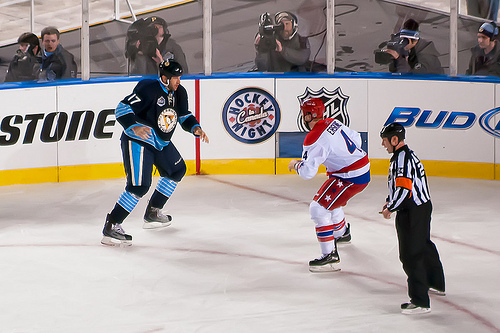
Why Do Hockey Players Fight?
Why do hockey players fight? They don't do it in any other sport.
This question doesn't have an easy answer. When I think about it, I think of a guy I work with, from India, where the primary sport is Cricket. Whenever he speaks of someone in Cricket using foul language, or doing something under-handed, he shakes his head as if he can't believe it. And he says, "Cricket is a gentlemen's game." Well, ice hockey is very far from a gentlemen's game. It is a game of Canadien farm boys.
Ice hockey is a game where the rules are left intentionally subjective. There is an etiquette among hockey players, they are expected to police themselves, and routinely might makes right.
A few examples may be, when a player speaks to an opposing player with certain types of language or refers to things that are offensive. Other examples are crossing lines, such as stopping in front of a goalie down on the ice, and spraying snow in his face. This would warrant some type of retaliation. Or possibly, a player gives a mild bump to an opposing goalie.
Each team carries one, or possibly a few, players who's unofficial title is the enforcer. These player's have the role on the team to exact justice in the name of their teammates. If they deem that a line has been crossed, the next shift will see them step on the ice, and get into the face of an opposing player.
Another reason for the enforcer, is if the momentum of a game needs a shift. Say a team is on fire, and their finesse players score 2-3 quick and easy goals. An enforcer may step onto the ice and start throwing his weight around. He may even begin roughing up the finesse players. In some games, this type of behavior can be more beneficial than scoring goals. The intimidation factor could shift the entire momentum of the game in favor of the other team.
These types of actions, do typically call for some type of retaliation, and a fight will begin.
There is another role on teams called the pest. This player has a similar role to the enforcer, but in many ways it's different. This player is responsible for things like "chirping", or speaking to the other team in an offensive manner. The player will routinely employ cheap-shots as a part of the game. This is done in order to ruffle the feathers of the opposing team's players. Specifically those that are best known for their talent, and not their physical play.
In many cases, this will bring the enforcer to the ice to try and exact some kind of justice. Pests have gained strength in recent years, because of certain rules that garner excessive penalties to teams who try to force a player to fight. Fighting has become something a little more honorable now, as players must agree. This lends itself to the tactics of the pest, as the pest doesn't typically fight, and if a pest doesn't want to, an enforcer is helpless to force the issue.
To answer the question, there are several reasons that hockey players fight. As the compete level of more advanced leagues begins to weigh on players, the tension, and the need to find advantages to win, becomes more of an intensive. So, for all the arguments, the real reason hockey players fight is, because they can.
Conclusion
There are several other things that happen in ice hockey that may be on your mind, but these are some of the big ones that have been discussed by even the most avid hockey fans. If you have anymore, feel free to add them to the comments section.




